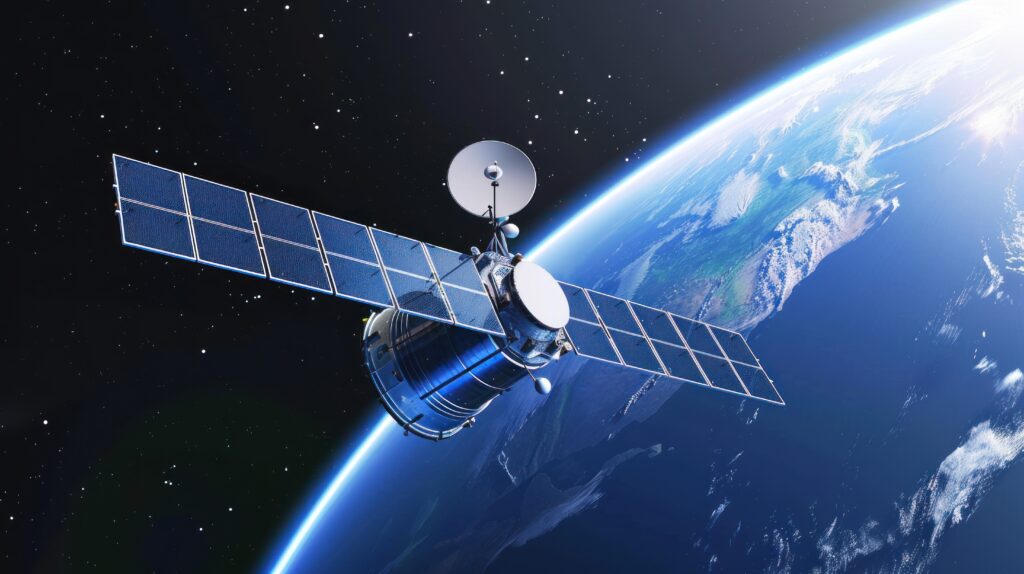The European Space Agency’s (ESA) Hera mission made an important milestone this week, with the Hera space probe successfully flying past Mars while en route to the asteroid Dimorphos. The flyby, which occurred on Wednesday, provided scientists with high-resolution images of the Red Planet and its lesser-known moon, Deimos. This maneuver marks a crucial step in ESA’s planetary defense mission.
Hera’s Successful Mars Flyby and Unique Images
On Thursday, the German Aerospace Center (DLR) in Cologne confirmed that Hera had successfully completed its flyby of Mars and its two moons, Deimos and Phobos. The mission team shared the stunning images during a live-streamed event, revealing the Martian system from a new perspective.
“We have fantastic images from the Mars-facing side,” said Stefan Ulamec, an Austrian geophysicist involved in the mission. “But this is one of the clearest and rarest images we’ve ever had of Deimos’ far side.” Deimos, the smaller and less explored of Mars’ two moons, has been photographed far fewer times than Phobos, its larger counterpart. “Every chance we get to observe Deimos is scientifically valuable,” added Patrick Michel, Hera’s principal investigator.
This flyby was a unique opportunity for scientists to gather data from an angle rarely observed, providing fresh insights into Mars’ moon system.
Hera: ESA’s Pioneering Planetary Defense Mission
Launched in October 2024, Hera is ESA’s first planetary defense mission. Its primary goal is to study the effects of NASA’s Double Asteroid Redirect Test (DART) mission, which intentionally crashed into the asteroid Dimorphos in 2022 to change its trajectory. The Hera probe will collect post-impact data to better understand the potential of asteroid deflection as a defense method.
“Two years ago, we tested asteroid deflection by impacting one directly,” said Ian Carnelli, Hera’s mission manager. “Now, we are following up to analyze the scientific data, turning this experiment into a repeatable planetary defense technique.” Carnelli emphasized the importance of this mission, calling it “like an insurance policy for Earth.” The data collected by Hera will be crucial in developing strategies for future planetary defense efforts.
Why Mars Was Used as a Slingshot
The Mars flyby was not part of the original mission plan. However, the scientific team made a last-minute adjustment to the spacecraft’s route, taking advantage of Mars’ gravity to propel Hera toward its target asteroid system. This maneuver allowed Hera to gain additional momentum, reducing its travel time by several months while also conserving precious fuel.
According to ESA, “This maneuver reduced Hera’s travel time by several months and saved a significant amount of fuel.” Carnelli described this process as “harvesting planetary energy,” a cost-effective strategy to optimize the spacecraft’s mission and fuel efficiency.
This gravity-assist technique, also known as a slingshot maneuver, is commonly used by space missions to save fuel and speed up travel to distant targets.
The Importance of Planetary Defense
The flyby event also highlighted the growing concern about asteroid threats. Astrophysicist and former Queen guitarist Brian May, who attended the event, stressed the critical nature of asteroid defense. “A collision could wipe us out just like the dinosaurs,” May warned. “If we fail to detect an incoming asteroid in time, humanity could be in serious danger.”
As space agencies around the world continue to explore planetary defense technologies, the Hera mission stands as a vital step in preparing for potential asteroid threats. The insights gathered from Hera’s flyby and its upcoming studies of Dimorphos will help scientists refine techniques for protecting Earth from potential asteroid impacts.
A New Era in Planetary Defense
The success of Hera’s Mars flyby and its ongoing journey to Dimorphos mark a significant leap forward in planetary defense. With the ability to manipulate spacecraft trajectories using gravity-assist maneuvers, ESA is demonstrating the power of scientific innovation to address global challenges. The Hera mission is paving the way for future space exploration efforts aimed at safeguarding our planet from potential asteroid threats.
